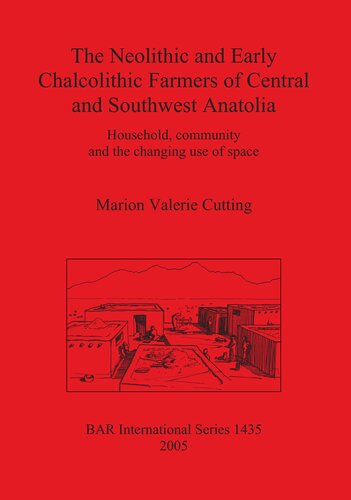

Most ebook files are in PDF format, so you can easily read them using various software such as Foxit Reader or directly on the Google Chrome browser.
Some ebook files are released by publishers in other formats such as .awz, .mobi, .epub, .fb2, etc. You may need to install specific software to read these formats on mobile/PC, such as Calibre.
Please read the tutorial at this link: https://ebookbell.com/faq
We offer FREE conversion to the popular formats you request; however, this may take some time. Therefore, right after payment, please email us, and we will try to provide the service as quickly as possible.
For some exceptional file formats or broken links (if any), please refrain from opening any disputes. Instead, email us first, and we will try to assist within a maximum of 6 hours.
EbookBell Team

5.0
20 reviewsThis research presents the qualitative and quantitative data collected from the architecture within ten Neolithic and Early Chalcolithic settlements in the Central and Southwestern regions of modern-day Anatolia, the larger part of Turkey lying on the 'Asian side' to the east of Istanbul. The sites investigated are: Aþýklý Höyük, Çatalhöyük, Canhasan III, Canhasan I, Güvercinkayasý, Höyücek, Bademaðacý, Erbaba, Hacýlar and Kuruçay. After investigating the interplay between theory and methodology in order to establish a research methodology, the work offers a general overview of the topography and climate of Central and Southwest Anatolia, reviews the current state of archaeological knowledge about prehistoric subsistence and settlement patterns and explains the selection of the ten sites for further study. The qualitative and quantitative data for these ten sites are then presented and analysed and the concluding chapter considers to what extent the research has been able to contribute to current theories about household and community within the Near East. It makes some general observations about the relationship between individual households and the wider community over region, subsistence patterns and time, sets the research within the wider field of settlement studies and identifies the need for further research.